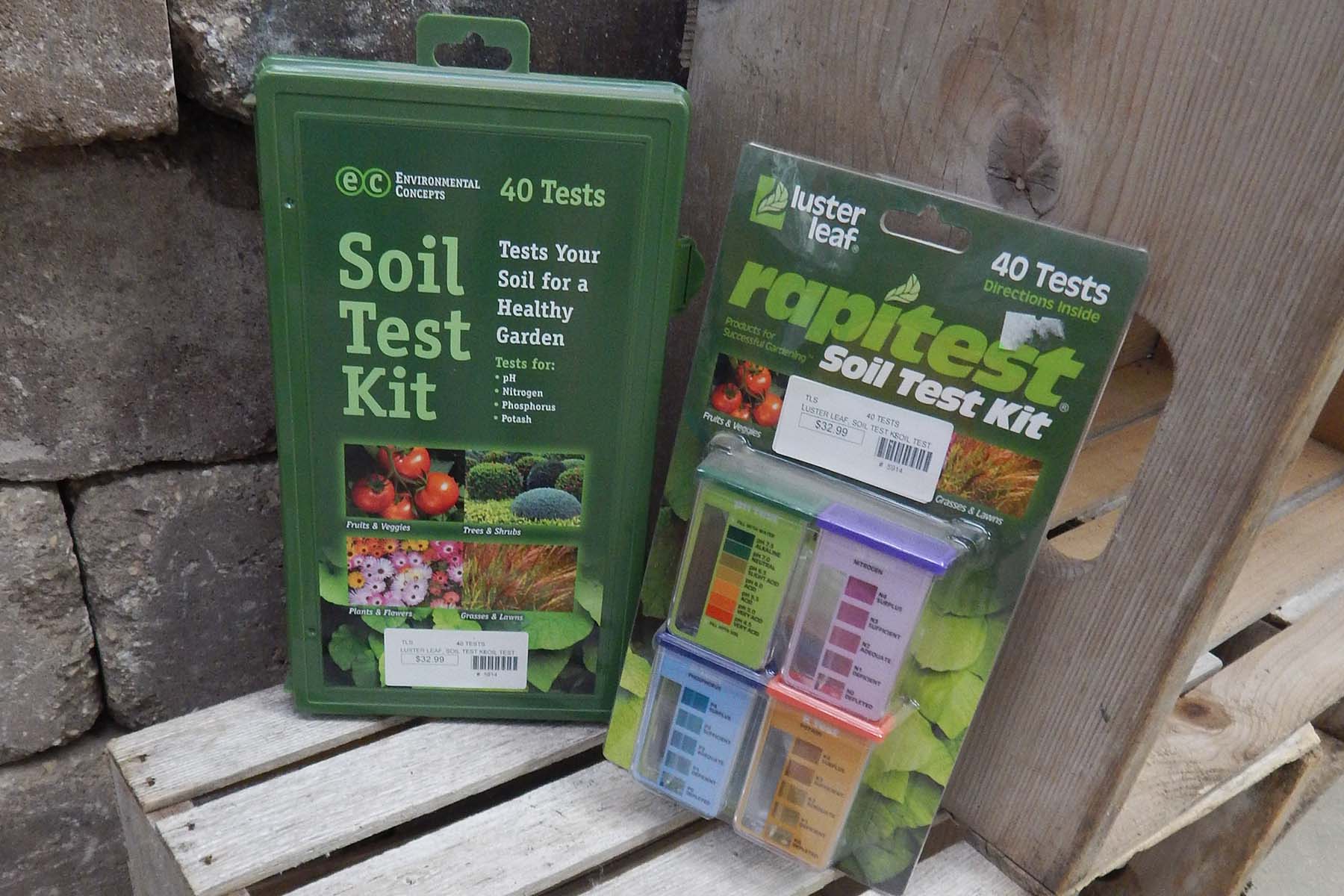

The soil pH value is a measure of soil acidity or alkalinity. Soil pH directly affects nutrient availability. The pH scale ranges from 0 to 14, with 7 as neutral. Numbers less than 7 indicate acidity while numbers greater than 7 indicate alkalinity. The ‘little variances” in readings represent a huge difference in the acidity of your soil. For example, a pH of 6 is ten times as acidic as a pH of 7; and a pH of 5 is one hundred times as acidic as a pH of 7.
A lot of trendy plants right now prefer a more acidic soil than what most of Waukesha County offers. Many of our customers are sitting on a big shelf of limestone bedrock which results in a very, very alkaline soil. We sell simple home test kits for pH and we have not been surprised by having our customers report “off the charts” alkaline numbers around Waukesha County.
As pH levels increase above 7.5, most trees will eventually experience nutrient deficiencies, often iron or manganese. Elevated soil pH may result in chronic long-term issues such as chlorosis, or insufficient chlorophyll that results in pale, yellow, or yellow-white leaves, low vigor, poor growth, and stem dieback.
Lowering the pH is not a one-and-done treatment, it’s something that needs to be addressed repeatedly over the lifetime of a plant.
Two materials commonly used for lowering the soil pH are ammonium aluminum sulfate and sulfur. Ammonium aluminum sulfate will change the pH rapidly: as it dissolves in the soil. Sulfur, however, requires some time. The conversion rate of the sulfur is dependent on the fineness of the sulfur, the amount of soil moisture, soil temperature and the presence of bacteria. Depending on these factors, the conversion rate of sulfur may be very slow and take several months if conditions are not ideal. For this reason, most people prefer to use the ammonium aluminum sulfate.
Both materials should be worked into the soil as directed. With all fertilizers and soil amendments, read and follow the label closely. Use caution as to not over-apply either of these materials.
When soil pH is too low on the pH scale, the soil is too acidic, and plants suffer ill effects and may even die. Acidic soil causes deficiencies in several critical nutrients, including phosphorus, potassium, magnesium, calcium and molybdenum, according to research published in Frontiers in Plant Science. While overly acidic soil is rare in our corner of Wisconsin, it is important to understand that just as there is such a thing as “too high”, it is also possible to go too low!
These imbalances may manifest in many ways. A phosphorous deficiency can cause spindly and reduced growth, and leaves may be dull, dark or blueish-green with purple petioles, advises Texas A&M AgriLife Extension. A potassium deficiency causes chlorosis, with scorching or necrotic spots on the leaves. A magnesium deficiency often presents as mottled or marbled yellowing of the leaves. A deficiency of calcium causes scorched leaf tips, chlorosis and die back.
To make soils less acidic, the common practice is to apply a material that contains some form of lime. Ground agricultural limestone is more frequently used. Different soils will require a different amount of lime to adjust the soil pH value. The texture of the soil, organic matter content and the plants to be grown are all factors to consider. For example, soils low in clay require less lime than soils high in clay to make the same pH change.
If the pH of your soil hovers around 6.5, you are in garden heaven, and you can grow a wide range of plants. Most ordinary plants will be able to cope if it is 7.0 (neutral), but a much higher reading suggests that you need to take notice, and focus on growing plants that tolerate or enjoy alkaline soil conditions.
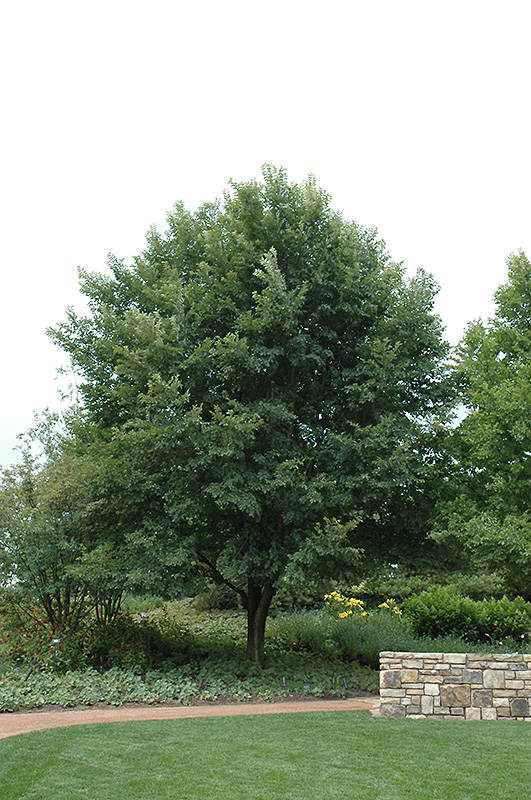
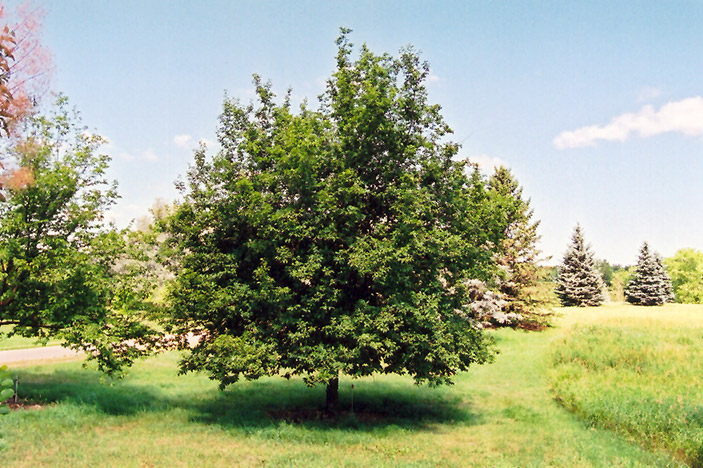

Katsura tree: With probably the best fall color of any tree suitable for alkaline soils, this Japanese native tree will reach 40 feet, and its heart-shaped leaves color orange and gold in fall. A great lawn specimen, hardy in zone 4.
Linden: All the different species and varieties of linden are excellent choices not just for alkaline soils, but for urban gardens and poor soil conditions. If you like a neat pyramidal look on your trees, you will love Linden!
Ironwood: For a native tree in alkaline soil, the beautiful bark and graceful branching of the Ironwood, or Hophornbeam, will quickly win you over. It is reliable on drier soils, and benefits from shade from larger trees. It grows in zone 3, and the clusters of inflated fruits do indeed look like the hops used for beer making.
Elm: After the devastation by disease of these iconic trees in the middle of the last century, they are having a comeback, thanks to disease-resistant species and crosses. The graceful arching form of elm trees is complimented by their toughness and durability in difficult spots, including alkaline soil.
Junipers: Most pines and fir trees prefer acid soil, but Junipers are content in alkaline-trending soils, as well as being drought resistant.
Arborvitae: This is another group of conifer evergreens that have no problem growing in all but the harshest alkaline soils. Great for fast-growing privacy!
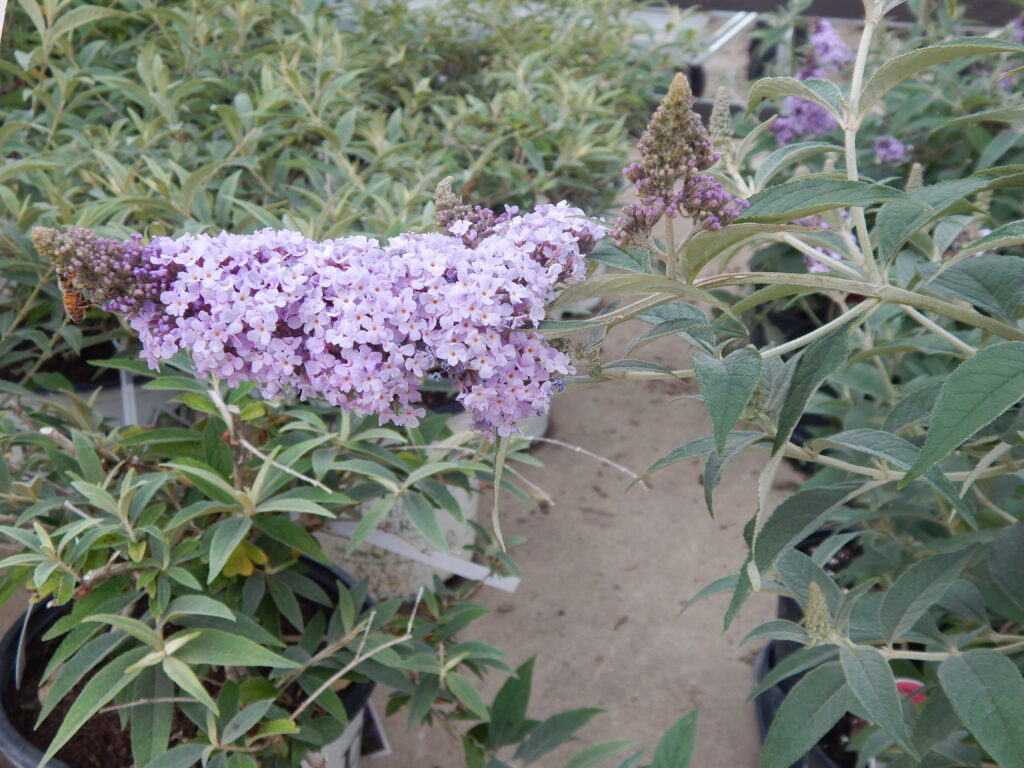
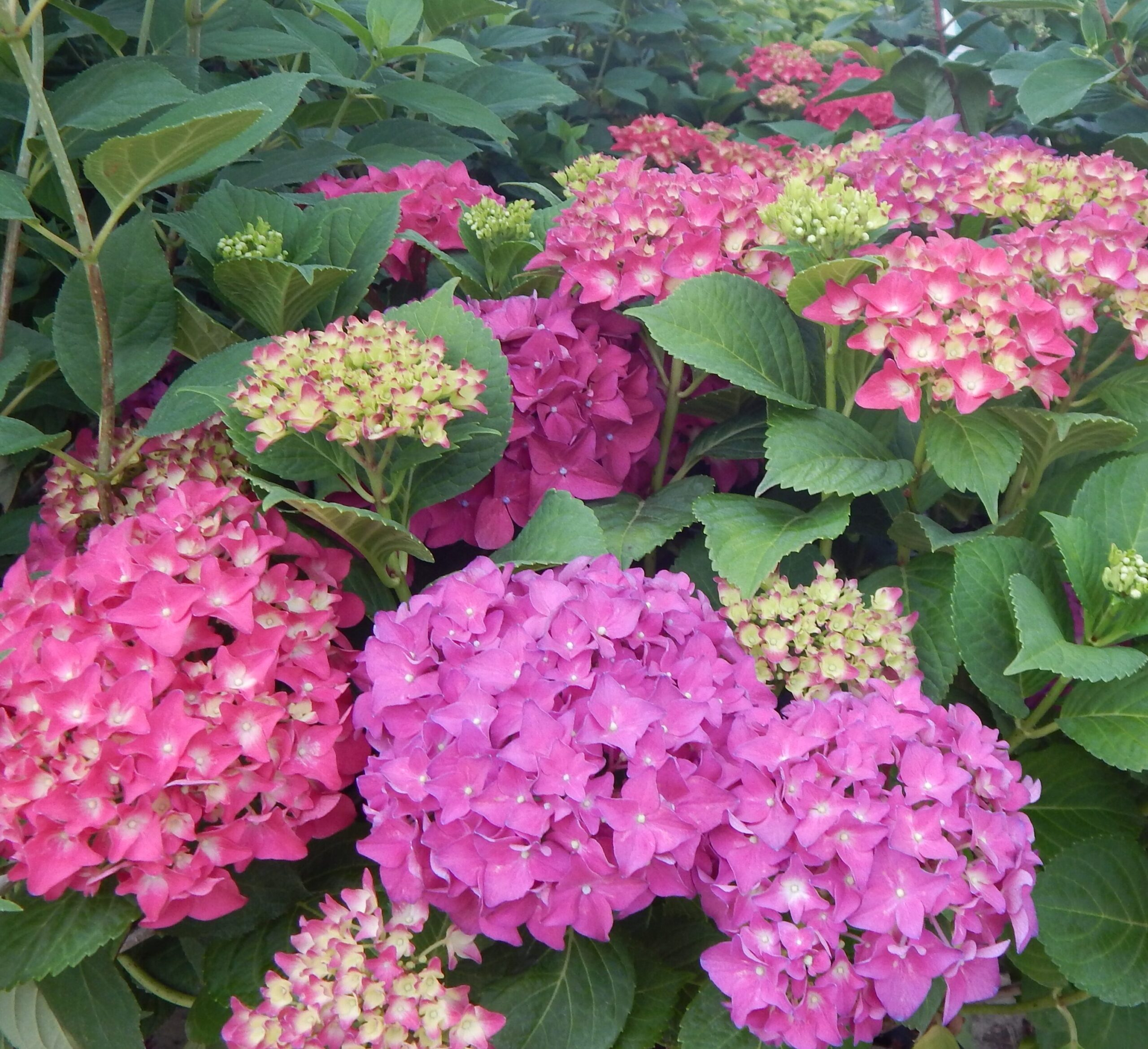
Butterfly Bush: Quite a few cultivars to choose from; all offering brilliant colors in shades of pink, blue, or purple. Known for attracting butterflies with their summer blooms and sweet fragrance, these please the eye as well as the butterflies!
Forsythia: Great option for hedges or borders. Blooms in early spring with quite the display of showy yellow flowers.
Hydrangea: Some hydrangeas are very sensitive to the pH of the soil in which they are grown, and this sensitivity is reflected in the color of their blossoms. Most Hydrangea macrophylla varieties have developed this sensitivity. In acidic soil (below a pH of 6), their flowers will be blue. In alkaline soil (with a pH above 7), their flowers will be pink, or even red.
There are exceptions to every rule, of course, and there are some exceptions here. Hydrangeas with white blossoms will always bloom in white, no matter the pH of the soil. The tried-and-true white varieties are generally the lowest maintenance option for gardeners who don’t want to worry about constant attention to pH.
Lilac: There are so many cultivars to choose from! From a light lavender to a dark purple, the blossoms will impress with not only their color but with that scent, we have all come to love. A true sign of spring!
Weigela: These lovely sun lovers boast pink or red blooms in the spring with foliage in shades of lime green, purple, or cranberry. Beautiful in a group as a border or as a specimen.
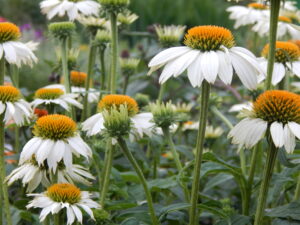
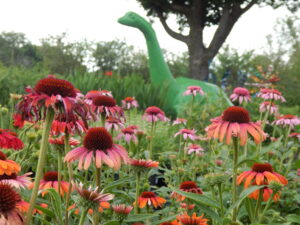
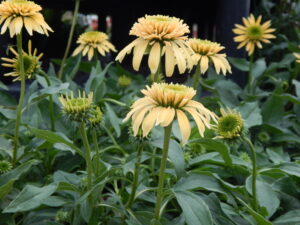
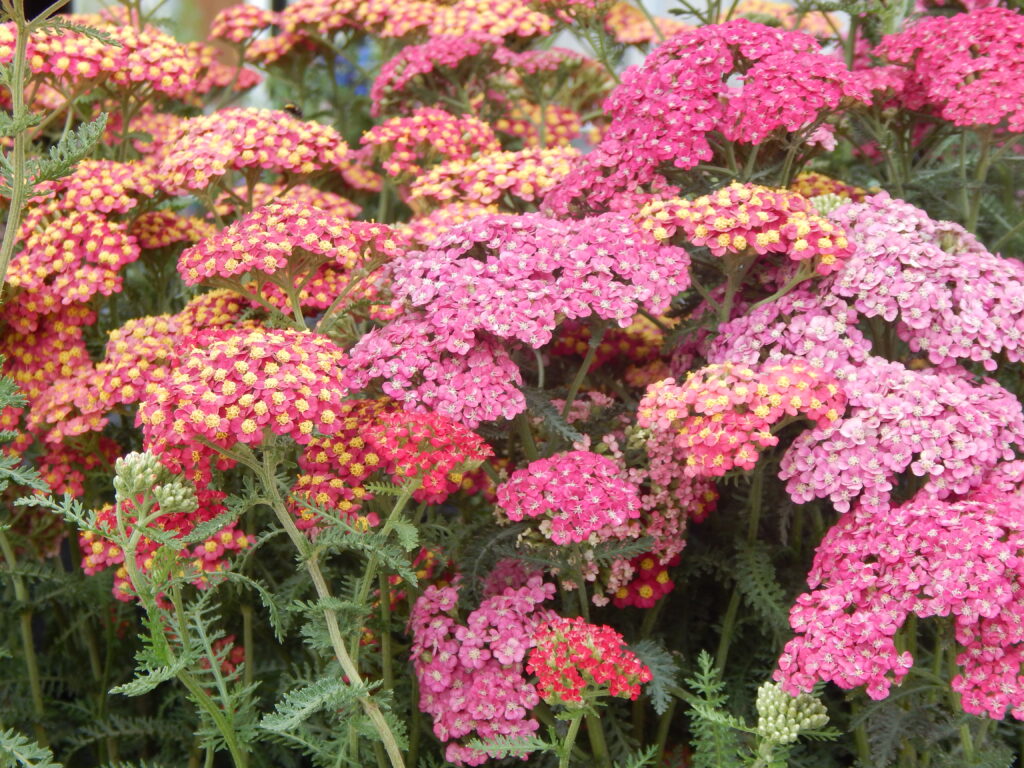
Lavender: Popular, heavenly scented perennial is a great choice as an accent in your garden. Just remember that they love hot and dry!
Canadian Columbine: Growing up to 12” high and 12” wide, this plant pleases with red and yellow flowers in the spring and attracts hummingbirds and butterflies.
Black Eyed Susan: Tolerant of different soil types, black eyed Susan prefers it mildly alkaline and up to 8.5 in pH! Enjoy any of its many cultivars on your lime rich land, all playing with the theme of bright yellow, showy flowers and a dark center, hence the funny name.
Coneflowers: These beauties can tolerate mildly alkaline soil and they will fill your borders and beds with their warm shades of yellow, magenta, red, pink etc. Easy to grow and very sturdy indeed, these generous perennials will never let you down!
Yarrow: Yarrow is ideal for naturalized areas, but also borders. Its large inflorescences attract lots of pollinators, and there are many varieties with yellow, pink, rose, coral, red and purple blooms.
Retail Hours
Sun: CLOSED
Mon: CLOSED
Tue: 9:00am - 6:00pm
Wed: 9:00am - 6:00pm
Thu: 9:00am - 6:00pm
Fri: 9:00am - 6:00pm
Sat: 9:00am - 4:00pm